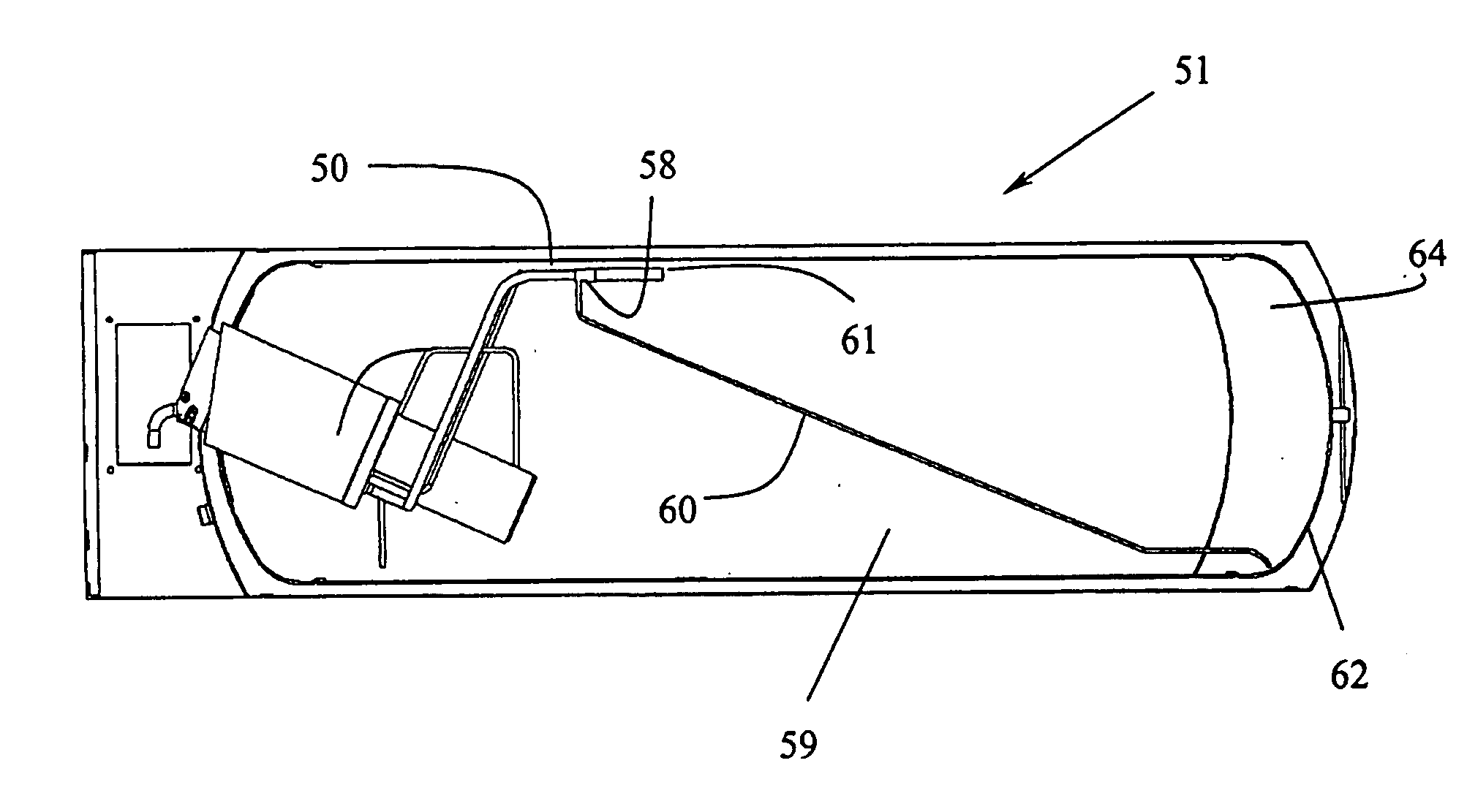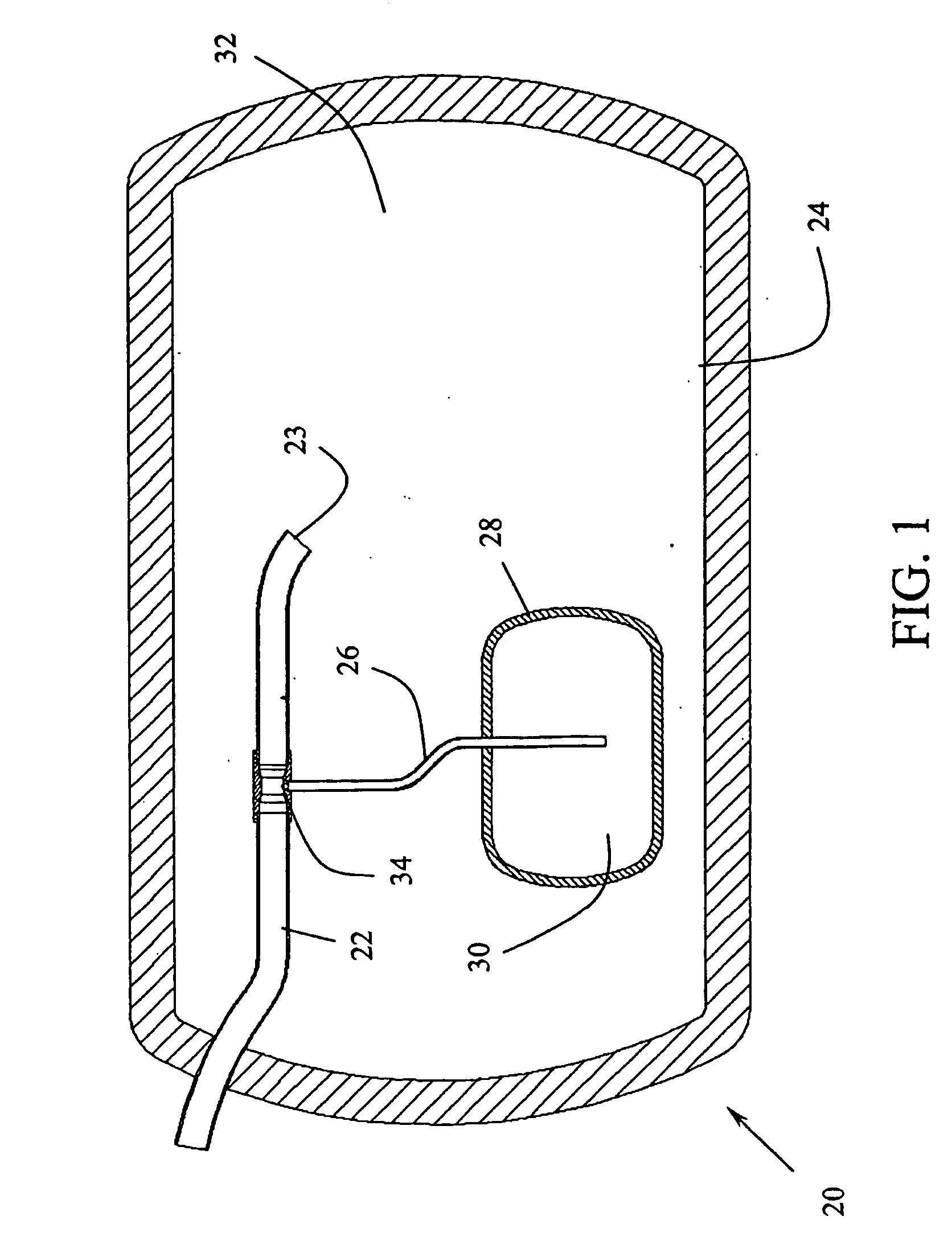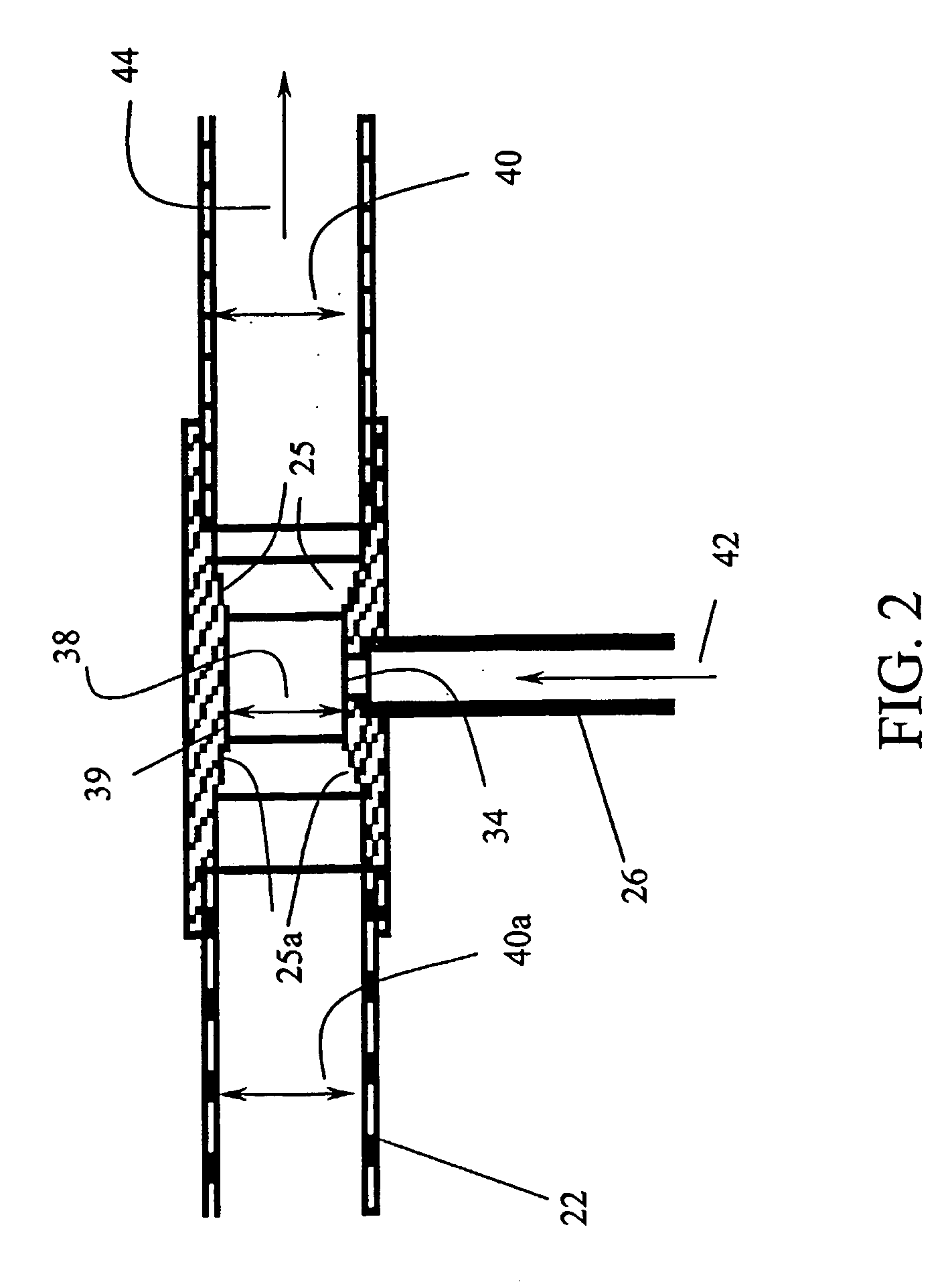Storage tank for cryogenic liquids
a storage tank and liquid fuel technology, applied in the direction of liquid handling, packaging goods type, container discharging methods, etc., can solve the problems of difficult to store gaseous fuels as efficiently as liquid fuels, cryogenic storage presents its own challenges, and the volume is reduced. , the effect of reducing the volum
- Summary
- Abstract
- Description
- Claims
- Application Information
AI Technical Summary
Benefits of technology
Problems solved by technology
Method used
Image
Examples
Embodiment Construction
)
In the present method, a cryogenic tank is disclosed that utilizes pressure to provide an ullage space within an LNG tank at the completion of refueling the tank. Specifically, the Bernoulli principle is utilized to secure and maintain an at least partially evacuated ullage space within the LNG tank.
Referring to FIG. 1, cryogenic tank 20 is shown. Referring to FIG. 2, a close-up of cryogenic tank from FIG. 1 is shown near junction 34. Refueling line 22 extends from a point outside tank 20 to opening 23 disposed within inner vessel 24. Refueling line 22 has at least two distinct cross-sectional areas along its path. These areas are determined by venturi diameter 38 and line diameter 40 as the refueling line is generally cylindrical. Slope 25 joins that portion of refueling line 22 with venturi diameter 38 with the portion of refueling line 22 with line diameter 40. Venturi diameter 38 is smaller than line diameter 40. Slope 25 is set at an angle joining the venturi diameter secti...
PUM
 Login to View More
Login to View More Abstract
Description
Claims
Application Information
 Login to View More
Login to View More - R&D
- Intellectual Property
- Life Sciences
- Materials
- Tech Scout
- Unparalleled Data Quality
- Higher Quality Content
- 60% Fewer Hallucinations
Browse by: Latest US Patents, China's latest patents, Technical Efficacy Thesaurus, Application Domain, Technology Topic, Popular Technical Reports.
© 2025 PatSnap. All rights reserved.Legal|Privacy policy|Modern Slavery Act Transparency Statement|Sitemap|About US| Contact US: help@patsnap.com



